This fourth blog post is part of Food Safari Kuala Lumpur 2014 – a series of ten mouth-watering blog posts of the best eats during my 9-day trip to the city.
~~~~~~~~O~~~~~~~~
“Laaaii.. Sir! carter lonjeen lolax, cheap cheeeeeeeap!”
yells the street hawker.
Yes, you heard right ~ Cartier, Longines & Rolex watches..
Welcome to Petaling Street
Kuala Lumpur began in the early twentieth century as a small mining town. Its founding father Yap Ah Loy managed to convince the local Malays to grow rice and vegetables to resuscitate the precinct after a civil war erupted between the local Chinese community in 1870.
He later opened a milling factory along Petaling Street to process tapioca from his farm. Chee Cheong Kai, literally meaning ‘starch factory street’ in Cantonese became synonymous with this street.
From its Chinese roots, Petaling Street is today considered to be the heart of Chinatown in Kuala Lumpur which is popular among locals and tourists alike. There are dozens of restaurants along this street and stallholders start trading from about 11am till late evening. They sell anything from toys, souvenirs, nick-nacks, pirated brand-name clothes, watches, handbags, shoes and accessories to snack food and drinks.
Although prices are usually found on the items, it is common practice to haggle in order to land a bargain.
The novelty about shopping in Petaling Street is trying to land a bargain even though most items are relatively cheap. Quality is inferior since most goods are pirated.
Then again, one may find good quality bargains too if one is bothered to look hard enough.
Textiles and cloth are popular with locals who choose their own material and tailor make their own style of clothing.
Wooden clogs are usually worn by locals when in the bathroom or wet areas around the house.
Petaling Street Wet Market
From early dawn, Petaling Street Wet Market begins trading where butchers, fishmongers, greengrocers carve out their livelihood.
(Warning: Three graphic images of meat processing below)
An entire pig is expertly sliced up with a cleaver in the open for whoever is keen to observe. In the image above, pork belly drapes across a metal rail while ribs are hung below.
On the extreme left is one side of a pig’s face, elongated from being hung on its snout. A pig’s tail is on top of the pile of meat below.
One side of a pig’s face sits on the the benchtop, the numbering on its ear still clearly marked.
Does anyone know of a good recipe for pig’s face?
Two whole legs complete with trotters are on display at one end of the butcher’s benchtop.
Images of Christmas ham come to mind although it’s a rare sight to see pork legs with their trotters intact.
There is a variety of fish such as pomfret, mackerel and local siakap (similar to barramundi) placed on ice blocks. I spot a prized red coral trout in the middle of this stall.
The scales on this local freshwater fish are pretty big in relation to its size.
The freshness of young ginger is evident with its vibrant green and pink stalks.
Mangosteens are a seasonal tropical fruit though I seem to see them no matter which time of the year I am in Malaysia.
They are sweet like a creamy lychee with a seed that is slimy and bitter if bitten into. The husk has a notorious purple liquid that produces stubborn stains on your clothes if you are not careful.
Prawn fritters are whole prawns in batter deep fried to a crispy golden brown.
It is fragrant with prawn aroma though I avoided this snack as the high amount of oil and fat is quite obvious.
Wong Low Kat is a herbal tea that originated in 1828 during the Qing dynasty in Guangdong and Guangxi provinces in China.
This tea has a bitter taste and is known to relief heat and toxicity from the body.
Wanton noodles is a popular dish among locals.
Wantons are usually made with mince pork, prawn, water chestnut, Chinese mushroom and preparing these dumplings in the open is often a familiar sight around food hawker areas.
Glutinous rice balls which are soft and gooey is filled with sweet black sesame paste and coated with crushed peanuts.
Apom balik is a popular local pancake which is crispy, filled with peanuts, sugar and creamed corn kernels.
Jambu air is a tropical fruit which is very popular among the locals.
It has a crunchy texture that is similar to apple and are sometimes cut up and added to Chinese-style rojak with thick shrimp paste.
Petaling Street is a popular destination for both shopping and food. Today, I am not here to shop. So, there is only one other thing to do.
Madras Lane
Perhaps more santan or coconut milk will add richness but
this curry laksa already has all the elements that make it one of the best of its kind.
Madras Lane is a small alley within the Petaling Street Wet Market famous for its chee cheong fun, assam laksa and curry laksa.
The alley is clean and stools are available in front of each food stall for ‘counter dining’ street hawker style.
At nine o’clock on a weekday, Madras Lane is not overly busy and I decide to take a short tour to check out all the food stalls.
There are two assam laksa stalls next to each other at the entrance into Madras Lane and both look so enticing with all its fresh ingredients all laid out at the counter – mint leaves, julienne pineapple, cucumber and thinly sliced Spanish onions.
It’s still relatively early in the morning and yong tau foo is being prepared behind the stall.
Chee cheong fun is one of the most popular breakfast staple among the local Chinese community.
At this early hour in the morning, the lady stall owner is already preparing chee cheong fun into small, individual plastic bags, presumably for takeaway customers during the busy lunch hour ahead.
The two assam laksa stalls also sell curry laksa. I am in a dilemma to choose which to order from as both look equally enticing.
Malaysian kopi
Malaysian style coffee or kopi is strong in flavour. Sweetened condensed milk is used which renders the coffee relatively sweet.
‘Kurang manis’ literally translates as less sweet in Bahasa, a very useful term if you prefer to wind down the sweetness dial of your coffee to ‘moderate diabetic level’.
Chee Cheong Fun
The famous chee cheong fun is smooth and silky. You can opt for chee cheong fun cut in two ways – crosswise or lengthwise.
The combination of sweet hoisin and chilli sauce with the nutty flavour of sesame oil and roasted sesame seeds is legendary in this dish. I doubt chee cheong fun can get any better elsewhere and it’s also the perfect starter for the breakfast item I have been pining for.
Curry laksa
I’m not sure how I came to choose the curry laksa stall located further away from the entrance into Madras Lane.
For Malaysian style curry laksa to be any good, blood cockles is a must because it adds flavour and complexity to the curry broth.
The bubbling hot curry broth next to a fiery pot of curry chicken is enough whet any curry lover’s appetite.
Rice vermicelli, mee and fresh beansprouts are dunked through boiling water to warm up the noodles and gently cook the sprouts. Curry chicken and blood cockles are added before the piping hot curry laksa broth is ladled onto the noodles.
Here is another defining moment in my KL food safari.
This curry laksa is piquant and gritty with the raw flavours of blood cockles. Curry chicken on the bone which has been cooked the day before has spicy and aromatic flavours infused into the meat.
The regular laksa at this hawker stall comes with small batons of snake beans and eggplant which I did not want. For me, the combination of these kind of firm and non-leafy vegetables, along with okra, tomato and cabbage belong in a vegetable curry, not in laksa.
It is worthy to note curry laksa, Malaysian street hawker style, do not have diced shallots and deep fried onions sprinkled on as garnish. Many restaurants which serve curry laksa, especially those in Australia, inappropriately add these two items as garnish, presumably to make this dish look “prettier”. To me, the taste of these two items, especially diced shallots in laksa, do not belong in a hawker style curry laksa.
The only vegetable that is legit in Malaysian style curry laksa is freshly blanched beansprouts and curry leaves, for just its flavour. The curry leaves should be wilted and browned, its flavours imparted into the soup from hours of slow simmer.
This is NOT a meek, coconuty, nyonya style Singapore or Katong laksa (as it is popularly known among Singaporeans) with its subtle lemongrass and kaffir lime flavours.
This IS the real deal. It is Malaysian curry laksa, street hawker style if you will, with all its bold and unrestrained spicy and peppery notes. And you are looking at one of the very best laksas in Kuala Lumpur if not the whole of Malaysia.
Petaling Street and Madras Lane is a melting pot for Malaysian street food.
For me, both the chee cheong fun and curry laksa would make me come back time and again. The choice of what people are eating here says it all.
Here’s some of my tips when planning a food safari in KL:
- Do some basic research on eat streets, hawkers and restaurants which are known for particular Malaysian style dishes to get some idea about whether the food actually suits your tastes.
- Local weather can be warm and humid, so do wear loose and comfortable clothing.
- Comfortable footwear is important if you are planning to walk the streets of KL.
- Carry bottled water and lots of face tissues for those deliciously greasy noodles.
- Pace yourself and avoid snacking on all sorts of foods as calories do add up quickly.
- Be very certain about what’s in your food if you have food allergies.
- Carry medication for diarrhoea and food-poisoning, especially if you are consuming street food for the first time or have even built up resistance.
- Be vigilant on the streets as some areas of KL are notorious for petty crimes such as snatch thieves and pickpockets. Avoid carrying loose handbags, large amounts of cash, important travel documents, credit cards and elaborate jewellery.
Petaling Street
Kuala Lumpur, Malaysia
Opening hours: Tuesday to Sunday 8.30pm to 3pm


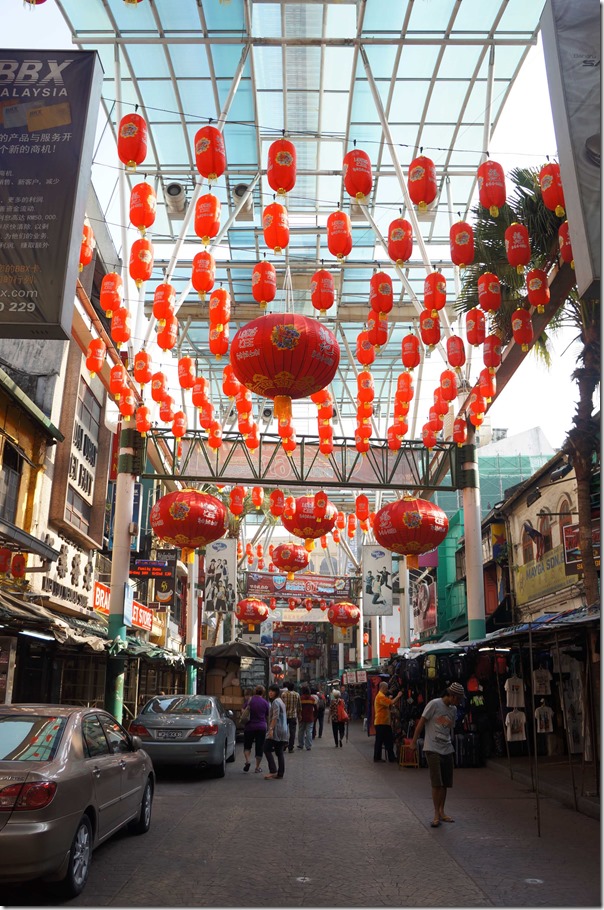










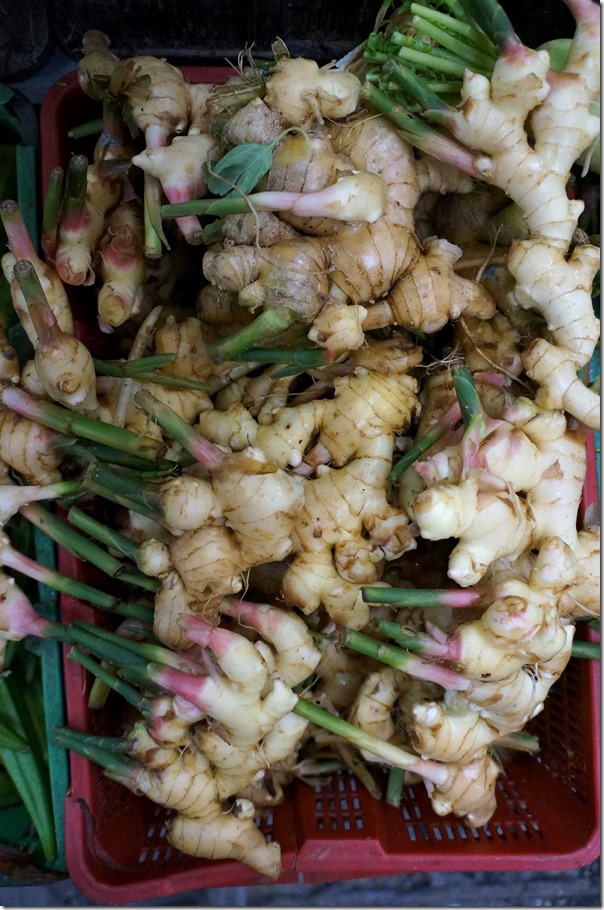

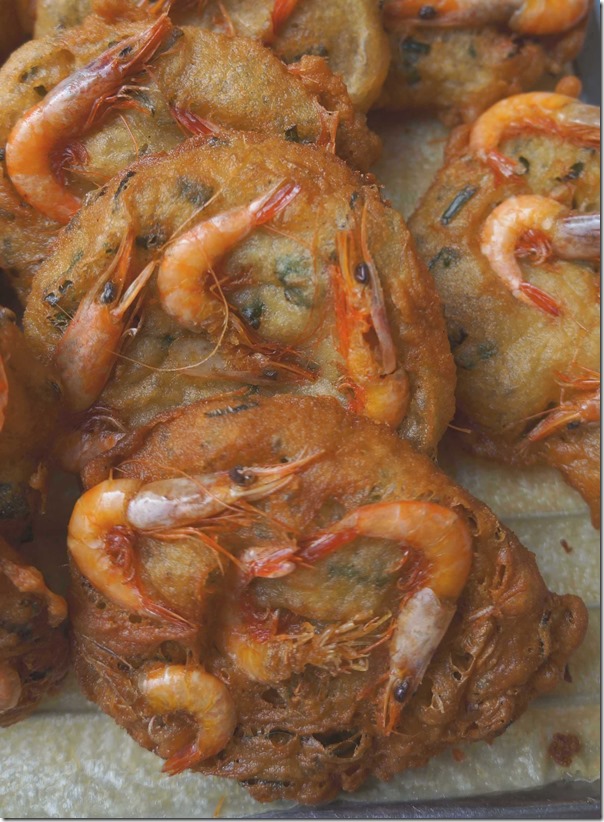



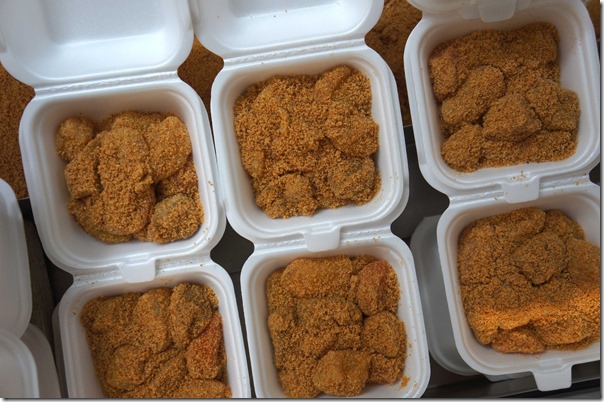


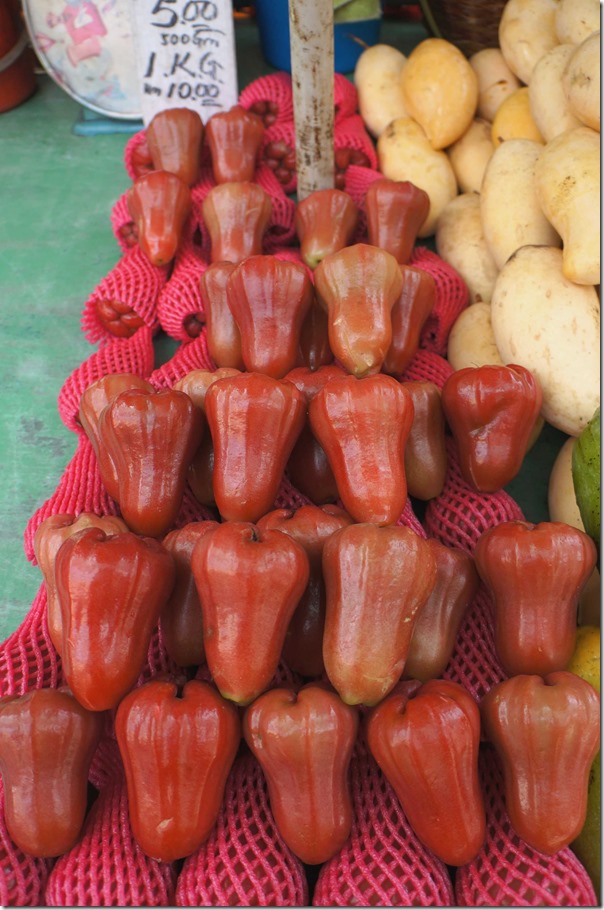

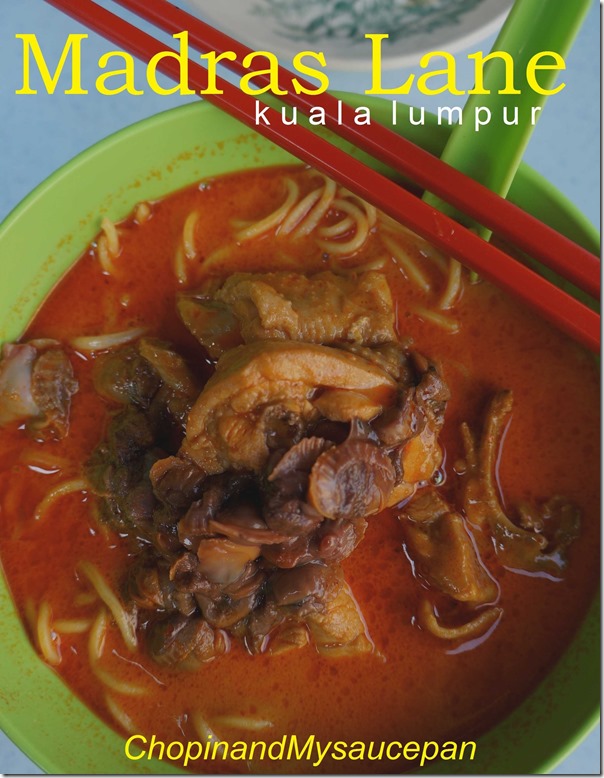











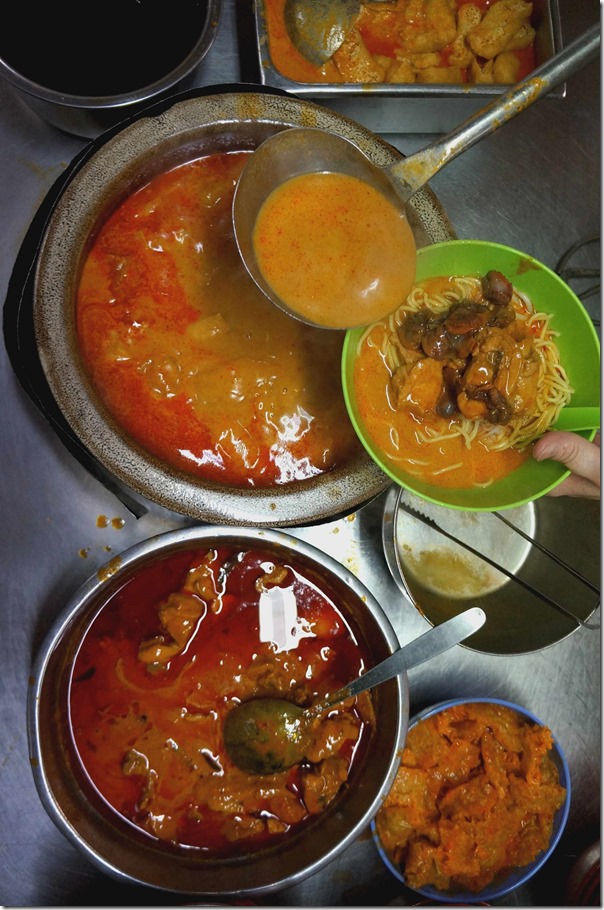
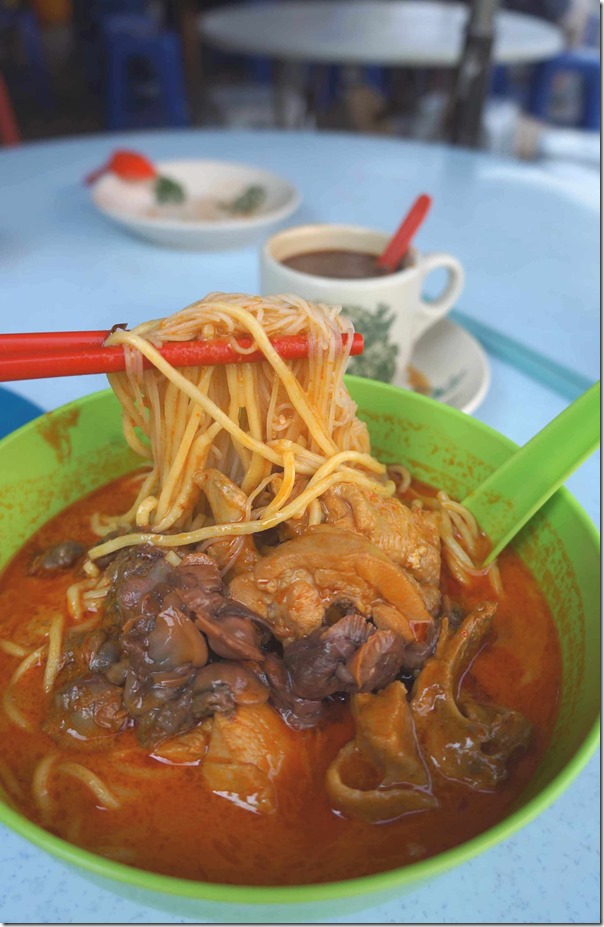






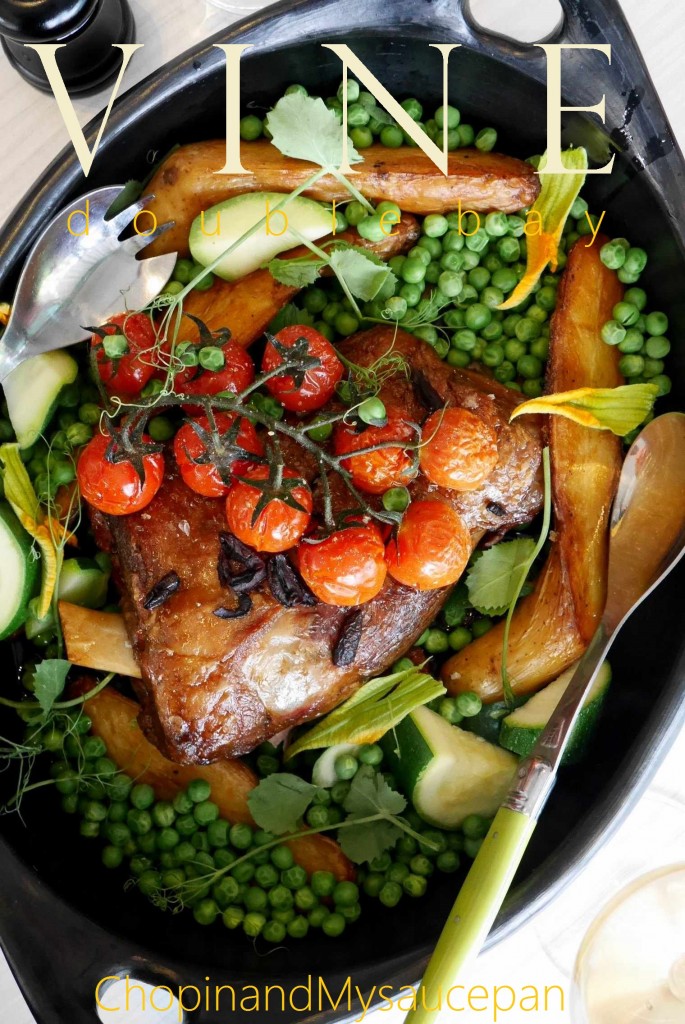







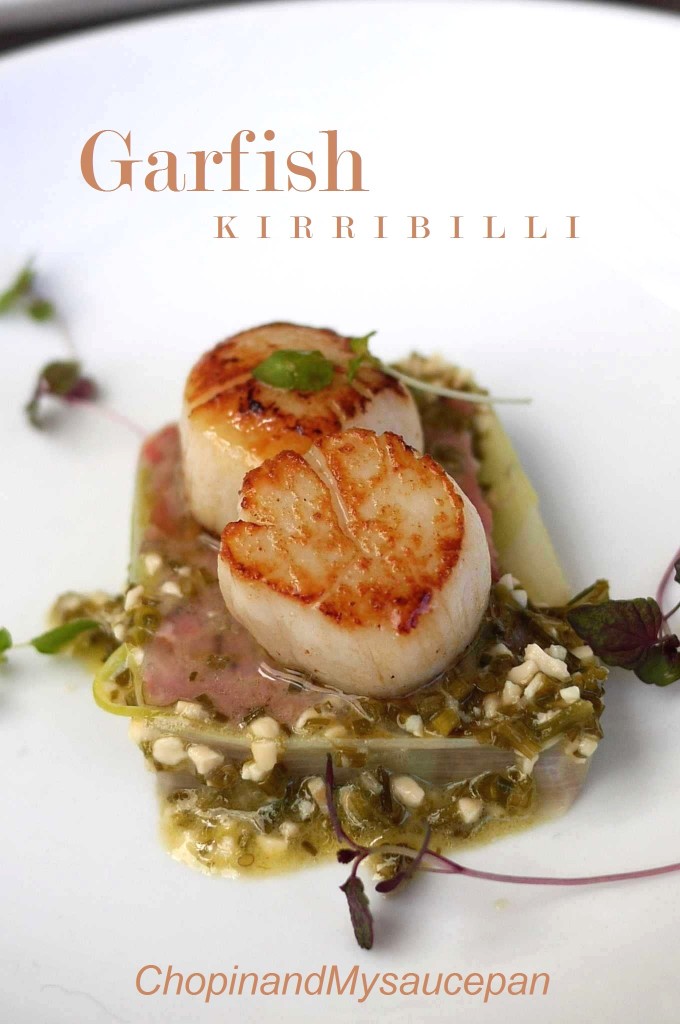
















































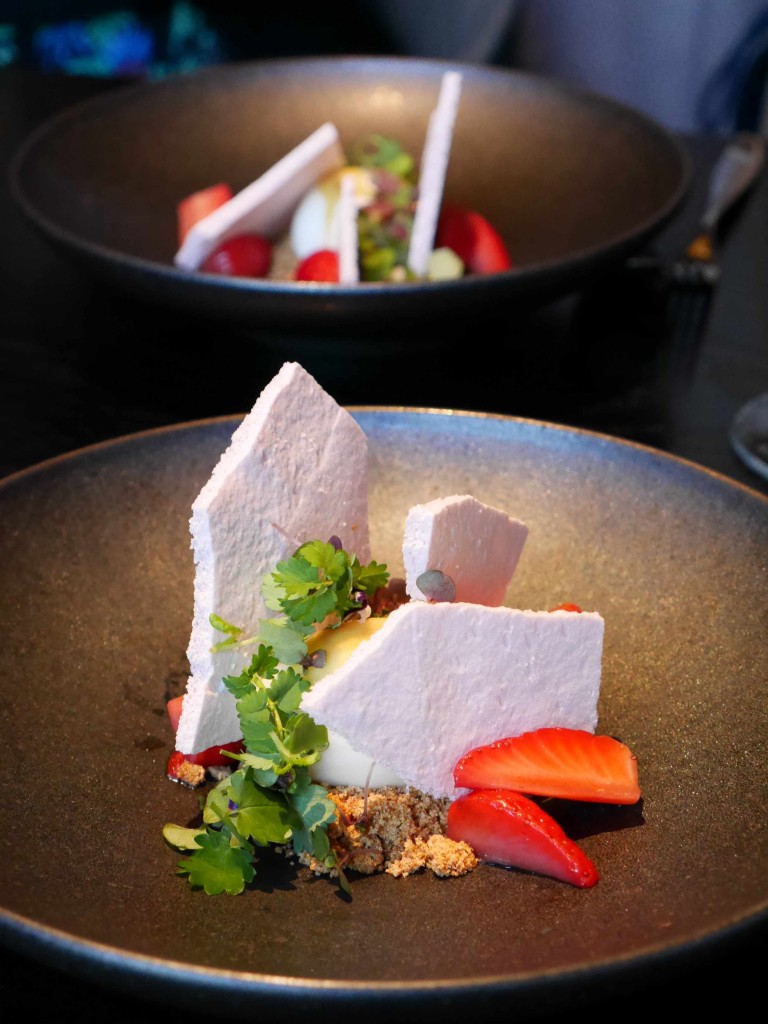



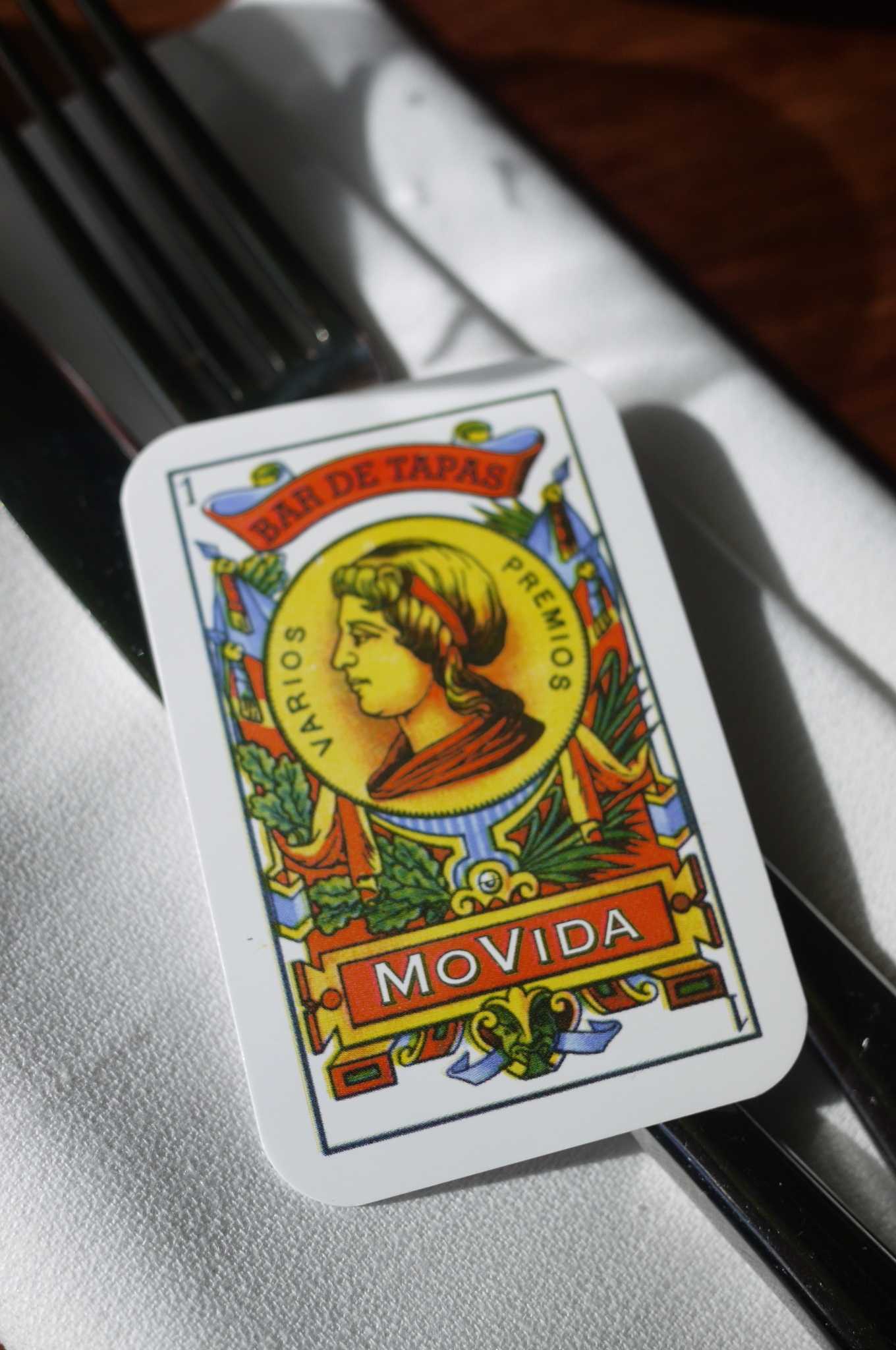






























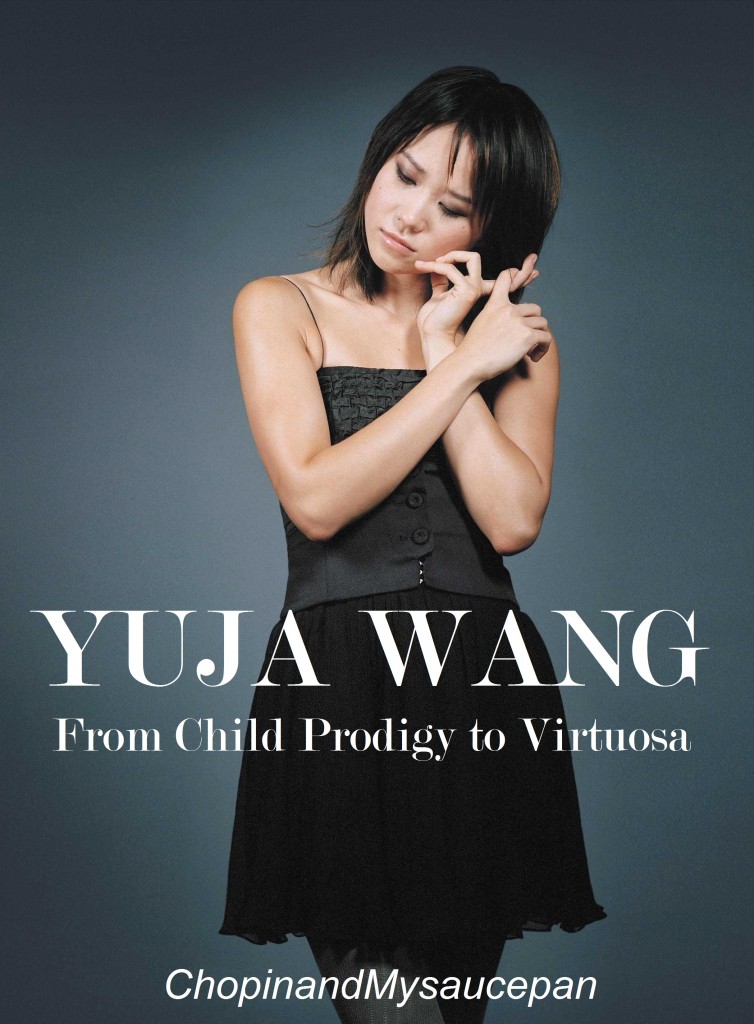










There’s just something so attractive about the rustic, almost crude way food is prepared in hawker centres like Petaling Street. Never go out of fashion.
Daer Michael,
The more crude it is, the tastier the food!
This is a great post – thank you for sharing your experience and providing all those great travelling tips to KL – I now can’t wait to visit. Your photos are excellent, esp. love the aerial view of the curry pots and the laksa being made. The cockle laksa looks exceptional indeed. I am now hungry.
Dear Padaek,
KL is a great food haven as long as one knows where to go and local knowledge definitely helps. When I saw the curry pots with that fiery red bubbling away, I just had to take an aerial shot!
Pingback: Petaling Street & Madras Lane, Kuala Lumpur | Chopinandmysaucepan | Today In Malaysia
that’s a nice round up for what PPS has to offer!
Dear KY,
Thanks for popping by. I’m sure you know of a few favourites of your own too!
I used to go to that place a lot, have you been to that vendor who sells satay. Still remember this place vividly
Dear Raymund,
I’m not sure if there’s a satay stall during the day.
Petaling Street is predominantly a Chinese area and satay stalls are usually operated by the Malays though there is a small number of Chinese satay stalls, some of which sell pork satays too.
Chee cheong fun is also loved very much in Indonesia! We usually eat it with deep fried taro fritters, spring rolls, and other fried goodies. It’s one of my all-time fav food!